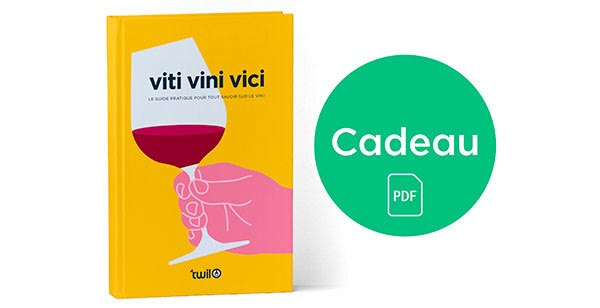You have no items in your shopping cart.
News
Gamay, a Grape Full of Freshness
Gamay, the king grape of Beaujolais, is one of the most expressive when it comes to conveying the deliciousness of a ripe red fruit. This early ripening grape, often underestimated, offers profiles of great freshness with soft tannins, making it particularly enjoyable to taste from a young age.
Likely the result of a cross between Pinot Noir and Gouais B, Gamay is currently grown on 33,000 hectares worldwide, including 30,000 hectares in France, and 22,000 hectares in Beaujolais! The red fruit notes of Gamay revolve around raspberry and blackcurrant, while it also expresses aromas of white fruits like apple and pear, along with a spicy side.
Beaujolais Winemaking and New Consumers
Beaujolais winemaking, known as semi carbonic or carbonic maceration, is at the heart of this fruity identity. This unique method preserves the primary aromas of the fruit and produces crunchy, light wines. This profile perfectly matches the evolving tastes of a new generation of consumers.
Today, young people seek wines that are less tannic, more digestible, and that can be enjoyed without waiting. Less drawn to immediate complexity, they prefer straightforward, sincere wines that pair well with everyday meals or simple moments with friends. Beaujolais checks all these boxes.
Simple Wines... But Not Simplistic
Beaujolais red wines are often described as "simple." But simple does not mean simplistic. They are wines of direct expression, fresh, fruity, and accessible, playing the card of obviousness with clear aromas and great drinkability.
Behind this apparent simplicity lies real know how. Gamay, the king grape, reveals an astonishing diversity depending on the terroirs—granite, schist, clay, or sand—showing finesse, tension, softness, or structure.
These wines, while enjoyable from their youth, are far from simplistic. They reflect demanding viticulture, precise winemaking, and a terroir that has nothing to envy from neighboring great wine regions.
Beaujolais as a Great Terroir Wine
Indeed, in Beaujolais, there are also more complex wines, made from specific terroirs and with long aging. These cuvées, while remaining typically Beaujolais with their freshness and fruitiness, offer deeper expressions. They will appeal to discerning palates, especially those seeking wines with great aging potential, those who appreciate woody, mushroom, or forest floor aromas, and those who wish to explore the richness of Beaujolais beyond its initial lightness.
So, are you ready to taste? Beaujolais is more than just wine—it's an invitation to share, to enjoy good company, and to discover. With every sip, a new story to savor together!
These hidden gems still too discreet…
We often think of Beaujolais for its reds, its soft and fruity Gamays. But it would be a shame to miss out on its white gems. Yes, Beaujolais also produces white wines, and some of them rival the great wines from the neighboring Mâconnais!
Did you know? Beaujolais whites make up only 2% of the vineyard’s production, but they truly deserve your attention!
The King Grape Variety
In Beaujolais, the king of white grape varieties is Chardonnay! Planted on the clay-limestone soils of the southern part of the region, it gives birth to bright wines with aromas of white flowers, citrus fruits, and sometimes exotic fruits. On the palate, you’ll find a lovely freshness, often accompanied by a very appealing mineral touch.
When temperatures rise, all we want is to open a nice, chilled white. How about betting on a lovely surprise this summer?
Terroirs to Rediscover
The Beaujolais and Beaujolais-Villages appellations allow for white wine production, but certain crus are starting to stand out. Winemakers are experimenting, refining their know-how, and it shows in the quality of the wines. You’ll find wines for immediate enjoyment, perfect for an aperitif, but also more complex whites that benefit from aging for a few years in the cellar!
At the table, it’s a real surprise
Beaujolais whites are wonderful food companions. With seafood, creamy poultry, or even aged goat cheese, they reveal all their finesse. Their balance between freshness and roundness makes them precious allies for fresh and delicious cuisine.
Could this be the perfect moment to (re)discover these charming wines?
Beaujolais whites are waiting for you to brighten your aperitifs, elevate your summer meals, and surprise you with their freshness and elegance.
And yes, Bordeaux also comes in white! Whether dry, mellow or sparkling, these wines testify to the richness of this wine-growing region. All with Protected Designation of Origin status, they reflect an ancestral know-how that continues to evolve over time, while offering freshness and diversity.
The Bordeaux region enjoys a temperate climate with an oceanic influence. This climate, combined with a wide variety of soils (gravel, clay-limestone, sand), enables us to grow a wide range of grape varieties that express the full richness of this terroir.
Bordeaux white wines are mainly produced from three main grape varieties:
• Sémillon: a key grape variety in the great dry and sweet white wines of Bordeaux, it brings roundness and richness. It is also used to make prestigious sweet wines such as Sauternes.
• Sauvignon blanc: This grape variety is known for its freshness and acidity. It brings lively aromas of tropical fruit, citrus and a fine minerality, particularly appreciated in dry wines.
• Muscadelle: although in the minority, it contributes delicate floral aromas to the blend, adding a further aromatic note.
The tradition of dry white wines in Bordeaux is perpetuated by 1,600 producers who create new cuvées: wines of character and generosity, lively and fruity whites, structured crus classés bursting with aromas, as well as atypical cuvées. There are 12 Protected Designations of Origin (PDO), covering more than 8,000 hectares. These wines account for 11% of Bordeaux production. The main grape varieties are Sauvignon Blanc and Semillon Gris.
Sweet white wines bear witness to the perfect harmony between nature and exceptional know-how. From this extremely delicate yet impressive balance emerge wines of exceptional flavor and intensity. Whether in cocktails or as an aperitif, a new breath of fresh air is created by new tasting experiences and inventive design.
There are 15 Protected Designations of Origin (PDO), 670 winegrowers and 2,500 hectares of vines! These wines represent 1% of Bordeaux production. The main grape varieties are Sauvignon Blanc, Semillon and Musc.
Although this appellation is one of the most recent in the Bordeaux region (1990), sparkling wine production combines a century-old tradition with modern success. The subtlety of the bubbles and the flavors of the Bordeaux grape varieties blend perfectly, adding a festive note. They are also available in white and rosé. There are 1 protected designation of origin (PDO), around 337 winegrowers and 1,824 hectares. Crémants account for 3% of Bordeaux vineyard production, and include all the region's grape varieties, both black and white.
Bordeaux wine, traditionally associated with meals, is taking a modern turn by becoming a must-have for aperitifs. This new consumer trend favors lighter, more refreshing wines, ideal for moments of conviviality. Dry, lively and fruity white wines, as well as rosés, are particularly popular with aperitifs for their freshness. Even Bordeaux reds, often perceived as powerful, are reinventing themselves with fruitier, more supple cuvées, ideal for serving slightly chilled.
Crémant de Bordeaux, with its fine bubbles, adds a sparkling, festive touch, perfectly suited to these shared moments. At the same time, wine bars and restaurants are innovating by offering cocktails based on Bordeaux wines, combining creativity and tradition.
This trend reflects a change in consumer habits, with consumers eager to discover wine in a more relaxed way, while taking advantage of Bordeaux's diversity and expertise. In this way, Bordeaux is adapting to new expectations, while remaining rooted in quality and authenticity !
Bordeaux reds offer a varied range of wines to suit all drinking occasions, for amateurs and neophytes alike. An assertive diversity and the desire to offer an accessible interpretation!
RUBY: Light, fruity wines
Ruby wines are characterized by their freshness and fruitiness.
to pair them with simplicity. So this is the bottle to have at home
for every occasion!
POURPRE: Fresh, gourmet wines
Wines with surprising profiles, purple wines represent
the emblem of a new expression of Bordeaux wines. A guaranteed surprise!
GRENAT: Silky, well-balanced wines
Garnet cuvées embody an emblematic identity of red wine. Timeless, they offer
a pleasant concentration of aromas.
CARMIN: Refined, complex cuvees
Cuvées carmin are iconic signatures in the tradition
the tradition of Bordeaux Crus classés. As exceptional wines, you must taste them at least once in your life.
at least once in your life...
Bordeaux's red wine vineyards extend over 86,000 hectares, covering the entire
covering the entire region, and accounting for 81% of Appellation d'Origine
Appellation d'Origine Protégée (AOP). These include Médoc / Saint-Emilion / Pomerol / Fronsac / Graves / Pessac-Léogan / Blaye and Bourg.
The main grape varieties used for Bordeaux red wines include Cabernet Sauvignon, Cabernet Franc, Merlot, Malbec, Carmenère and Petit Verdot.
Carmenère and Petit Verdot.
A little history
The winegrowing history of Beaujolais dates back to Roman times, when the first vines were planted in this fertile region. However, it was during the Middle Ages that viticulture really flourished, thanks to the influence of Benedictine monks who developed and perfected winemaking techniques. Their know-how laid the foundations for what was to become one of France's most appreciated appellations.
Over the centuries, its reputation has grown, attracting the attention of wine connoisseurs the world over. Its light, fruity red wines, made mainly from the Gamay grape, have won over the palates of even the most demanding wine lovers. The region is famous for its ten crus, including Morgon, Fleurie, Brouilly and Moulin-à-Vent, each offering unique characteristics that reflect the terroir and know-how of local winemakers.
A few emblematic dates
12th century: The seigneury of Beaujeu marked the history of Beaujolais.
17th century: Beaujolais becomes the leading supplier to Lyon's corks and taverns.
1927: The first cooperative winery opens in Beaujolais.
1951: The first Beaujolais Nouveau is marketed.
1985: A decree fixes the third Thursday in November as the date for releasing Beaujolais Nouveau for consumption.
2010: The beaujolais wine route and finally rethink embodying the backbone of the vineyard.
2018 : unesco officially designates the beaujolais as a "UNESCO Global Geopark".
Among the great men of Beaujolais is: Benoît Raclet, who invented vine scald. He discovered the remedy to get rid of the "naughty worm", the moth, an insect that devastated vines in the first half of the 19th century, especially in the Mâconnais region.
Sometimes nicknamed "the pope" or "the king" of Beaujolais. Georges Duboeuf, who came from a long line of winegrowers, settled in Romanèche-Thorins in 1964 to set up his own wine merchant business, selling Beaujolais and Mâconnais wines. A keen taster, he was keen to reveal the talent of the winegrowers and sublimate the great terroirs. He traveled the world to promote his wines alongside renowned chefs such as Guy de Savoy and Paul Bocuse.
Wines for sharing
Whatever their color, Beaujolais wines can be enjoyed both as aperitifs and at the table. They can be enjoyed at a variety of moments, always in the spirit of sharing, and seduce with their complex, crisp fruitiness.
Beaujolais de Fête, to celebrate the end of the wine year and the arrival of a new wine.
Beaujolais de Caractère, it's the perfect magnum wine to enjoy with friends around a bistro table.
Beaujolais d'Exception, a wine for laying down, to be shared with family and friends at moments of great emotion.
In recent years, Beaujolais, long considered a second-rate vineyard, has enjoyed a spectacular renaissance. The wine region is renowned for its light, fruity red wines. In recent years, many Beaujolais winegrowers and producers have undertaken to renew and modernize their production in order to revive the reputation of this wine region! It's this renaissance of the Beaujolais vineyards that is now being welcomed by wine lovers the world over.
A vineyard in full revival
Long underestimated, the Beaujolais vineyards are now enjoying an exceptional renaissance. The region's winegrowers have modernized their production, focusing on grape quality, vinification and maturation, and if there's one thing we can say for sure, it's that the difficult years are now far behind us.
As a result, Beaujolais wines produced today are of a higher quality than in years gone by, and are enjoying an unprecedented boom.
This may be due to a favorable climate, with grapes enjoying optimum ripeness to produce wines rich in flavor and aroma, while retaining the freshness and lightness typical of Beaujolais wines.
Today, Beaujolais is a vineyard in full revival, producing top-quality wines that are worthy of a place among France's finest !
The creativity of young winemakers
For a number of years now, the Beaujolais wine region has owed its renaissance to a new generation of dynamic, passionate winemakers who have breathed new life into the region! These young winemakers have understood the importance of quality and innovation in restoring the image of their native land. They don't hesitate to break old codes by adopting new winemaking techniques and creating more modern, original wines.
Thanks to their energy and creativity, these young winemakers have contributed to the emergence of a new image of Beaujolais as an innovative, dynamic and attractive winegrowing region.
Responsible approach
The Beaujolais winegrowing region is also aware of the importance of protecting the environment, and is resolutely committed to a responsible approach to viticulture. More and more winegrowers are adopting environmentally-friendly practices, such as organic farming, agroecology and agroforestry. Some vineyards have even been awarded the "Haute Valeur Environnementale" (HVE) label, which rewards farms committed to environmentally-friendly practices.
This commitment to sustainable development helps preserve the quality of soil, air and water, while improving the quality of the grapes and wines produced, thus testifying to the region's commitment to environmental protection.
Discover the wines of Beaujolais on Twil !
What is a terroir ?
A wine-growing terroir is a group of plots of land in the same wine-growing region, sharing the same climatic conditions, soil type and production techniques, all of which contribute to the specificity of the wine produced and marketed.
The region is divided into two main wine-growing zones: Haut-Beaujolais to the north, where vines flourish at higher altitudes, and Bas-Beaujolais to the south, where the climate is slightly milder. Each sub-region makes its own contribution to the richness and diversity of Beaujolais wines.
The Beaujolais region
The Beaujolais region encompasses a variety of terroirs, each with its own appellation. This emblematic region in the Rhône department is renowned for its characterful wines and unique terroir. Between the city of Lyon and Burgundy, Beaujolais offers a picturesque landscape of rolling green hills dotted with vineyards, where winegrowing tradition blends with generous nature.
Beaujolais is famous for its Crus, which represent the pinnacle of quality in the region. Each Cru has its own identity, influenced by the soil, microclimate and specific viticultural practices of the area.
Among the most renowned Crus are :
Moulin-à-Vent: Renowned for its robust, full-bodied wines, this Cru is often compared to Burgundy wines for its ability to age.
Fleurie: Known for its delicacy and floral bouquet, Fleurie produces feminine, elegant wines, perfect for accompanying refined cuisine.
Morgon: Appreciated for its structure and depth, Morgon offers wines rich in black fruit aromas and great ageing potential.
Each Cru offers a unique taste experience, reflecting the subtleties of the terroir and the expertise of local winemakers.
Passionate winemakers
Many winemakers adopt environmentally friendly practices, favoring organic and biodynamic cultivation to preserve the richness of their terroirs.
In addition, the region explores new winemaking techniques while preserving the traditional methods that make the reputation of its wines. Beaujolais winemakers seek to best express the quintessence of their terroir, using methods such as carbonic maceration to reveal the freshness and vivacity of the grapes.
The qualities and variety of its wines, the Beaujolais region owes it to the diversity of its terroirs as well as the passion of its winemakers, a unique know-how that will delight your taste buds!
Wines with surprising profiles, vins pourpres represent the emblem of a new expression of Bordeaux wines. These cuvées combine classic revisits with unpredictable flavors. Surprise guaranteed!
Which grape varieties for these atypical wines ?
Produced from preserved Bordeaux terroirs, these cuvées are the fruit of a selection of older grape varieties (including Malbec, Carménère and Petit Verdot) and single-varietal cuvées from old vines.
Tasting notes
To be enjoyed young and chilled, around 17°.
These wines offer an original, supple taste profile, with highly expressive fruit aromas, peppery notes and smooth tannins. A truly new taste experience!
Food & Wine Pairing
Unexpected flavors for a red wine that's perfectly suited to new consumer trends: vegan, flexitarian, vegetarian.
And for gourmets, it's perfect with white meats in sauce.
Ruby-coloured wines are characterised by their freshness and fruitiness, making them an easy pairing. It's the perfect bottle to have at home for any special occasion!
Production of ruby wines
Harvested early, the grapes are matured for a short period in barrels or stainless steel vats. When blending, it is the expression of the fruit that governs. Through these wines, the estates, co-operatives and trading houses commit to a consistent quality of production, vintage after vintage.
Tasting moment
Real ready-to-drink wines, you can enjoy them very young (up to 3 years) to keep their freshness on the palate. Fruity, ruby-red wines offer a nose of wild berries and a well-structured yet light palate.
Wine and Food Pairing
A pleasurable wine that will stand on its own as an aperitif with friends.
Afterwork or barbecue, these wines are perfect for any impromptu moment.
Garnet cuvées embody an emblematic identity of red wine, and are often in the majority in production. Timeless, they convey both notions of tradition and renewal. Structured wines, they offer a pleasant concentration of aromas and the promise of balance.
The origin
Garnet wines have been part of Bordeaux wine history for 2,000 years, and are the region's must-have cuvée. Made from a blend of Bordeaux's most renowned grape varieties, it is mainly the oldest vintages that display this hue. This is because, during bottle ageing, the pigments (anthocyanins) precipitate out, giving the wine a beautiful garnet hue.
Which grape varieties?
These cuvées are made from a blend of the best-known Bordeaux grape varieties (Cabernet Franc, Cabernet, Sauvignon, Merlot). They may also be made from the same grape variety. The vintage also influences the profile of these cuvées.
A tasting date?
Garnet wines can be enjoyed fairly young, and can be kept for 5 to 10 years! Indeed, these cuvées develop over time, and so do their aromas.
Food and wine pairing
Whether it's a hamburger with a good red meat or a more elaborate bistronomic dish, these cuvées go well with many dishes.
Our watchwords: simplicity and refinement!
The carmine cuvées are truly iconic signatures that preserve the tradition of the Crus Classées of Bordeaux. Exceptional wines from both the négociant and estate houses, it is essential that you taste them at least once in your life...
Excellent expertise
These "haute couture" wines are made using advanced and innovative techniques. And they are always made with quality in mind, with tailor-made choices at every stage: micro-parcel selections, manual harvesting, maturing for several months in French oak barrels.
What's more, these wines bear witness to the excellence of Bordeaux's terroirs and expertise!
Let's get on with the tasting!
The bottle: it would be a shame not to take a closer look! Very often, the labels mention the exceptional nature of the wine: grand cru classé, cuvée prestige, grande cuvée, etc.
These wines are a powerful red, with a deep, dense colour. On the palate, they offer finesse, length and aromatic richness. Alongside notes of ripe black fruit, there are subtle hints of toast and even vanilla.
Food & Wine Pairing
Go for meat dishes.
Because of their great ageing capacity, it would be wiser to save them for special occasions. But it's up to you to decide when that is!
Never miss a drop. To keep up to date with news from our winemakers and the Twil team, follow us on social media




















 TWIL - Achat de Vin
TWIL - Achat de Vin


